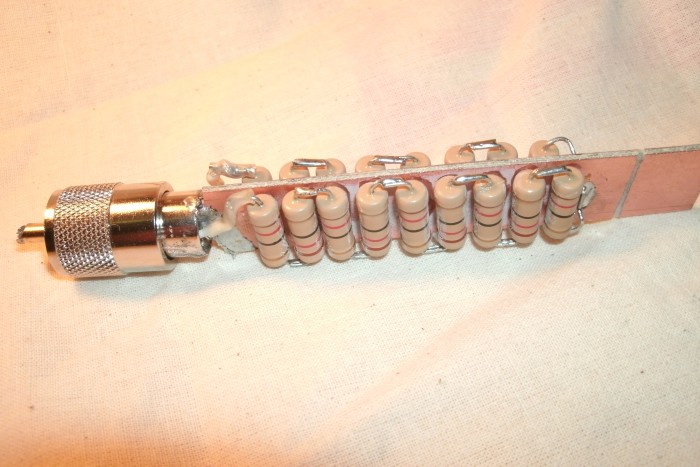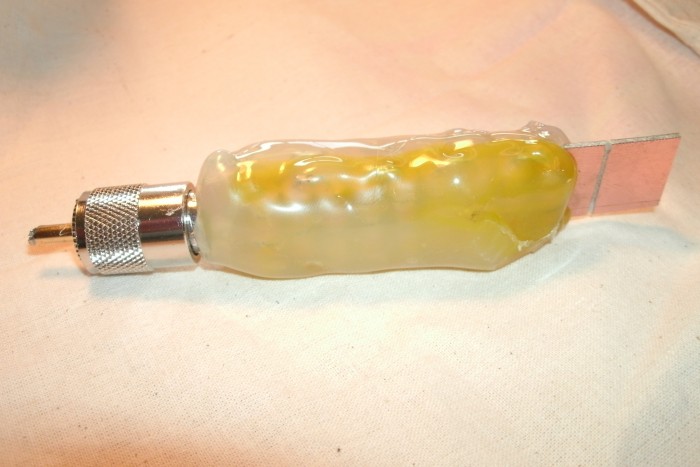[T oday’s run: rest day]
A dummy load is a device which can absorb radio frequency energy but not radiate it. A dummy load is very useful in doing transmitter construction, adjustments and measurements. You can send the output of the transmitter to the dummy load instead of to the antenna. That is useful in two ways: 1) it doesn’t send your signal out to the world and 2) the dummy load has known electrical properties (an antenna probably has unknown properties, mine definitely do).
Using a transmitter with a tuneable output network, you can tune the transmitter into a dummy load, then switch to the real antenna and tune the antenna to match the transmitter.
Most of the dummy loads that I am interested in have 50 ohm impedence.
A guy on one of the email lists (I think it was KB9BVN) was advertising that he had some 12 ohm resistors available and I acquired a set. Using 9 in series in one leg and 8 in series in another leg, the two legs in parallel comes pretty close to 50 ohms. I have had these sitting on the bench for awhile, contemplating how I should build my dummy load. A plan finally came to me.
I used a piece of PC board cut to be about the size of the resistors. I soldered the PC board to a regular UHF connector body. I used super-glue to attach the resistors to the sides of the PC board.
I then used a short wire from each end resistor to the center conductor of the UHF connector and the PC board itself as the ground.
After that, I tested it and saw that it was 53 ohms. I tried it out and it had 1:1 SWR (good!). With 30 watts going into it I could feel the resistors crackle and start to warm up.
After it cooled off, I smothered the whole thing in hot melt glue. My idea was that having the phase transition of the hot-melt glue from solid to liquid would absorb more heat if necessary. And it would keep the conductive parts away from each other and from other stuff. I lose the benefit of having the air remove the heat. So this design will heat up slower but also retain the heat longer I suspect.
I tested it again and still 1:1 SWR.

